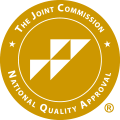Cedar Crest Hospital & Residential Treatment Center helps individuals who are struggling with Oxycodone addiction find long-term recovery. Located in Belton, TX, Cedar Crest is the leader in mental health care.
Understanding Oxycodone
Learn about oxycodone
Oxycodone is a synthetic opioid that is commonly used in a number of prescription painkillers, such as Percodan, Percocet, OxyContin, and Tylox. These medications are typically used in the treatment of those who have been struggling with moderate to severe physical pain brought on by injury, cancer, surgery, or other conditions. When an individual consumes a prescription medication containing oxycodone, he or she will likely see a decrease in pain paired with increased mood and a sense of relaxation. When the individual limits oxycodone use to the dosage and duration that his or her doctor has recommended, he or she can safely benefit from the effects of this medication.
Unfortunately, since oxycodone is so potent and prevalent, it is a commonly abused substance by those individuals who are looking to self-medicate and those who want to obtain a recreational high. Regardless of why and how an individual begins abusing oxycodone, the results can be equally upsetting. Oxycodone works with areas of the brain that are responsible for controlling automatic functioning such as respiration and heart rate. Therefore, ignoring the recommended dosage can cause cardiovascular damage, which can be fatal.
In addition to the risk of death, the abuse of oxycodone can expose an individual to a number of short and long-term risks, including the development of an addiction. Clinically referred to as opioid use disorder, oxycodone addiction can rob a user of the ability to control the amount and frequency in which he or she abuses this substance. It will also cause an individual to put the acquisition and use of oxycodone before academic, personal, and professional responsibilities.
When someone tries to overcome his or her addiction by ending his or her abuse of this dangerous drug, he or she might quickly begin to experience many painful symptoms of withdrawal. If the individual does not have access to effective professional care, these symptoms can be overwhelming and can lead to an individual falling deeper into a deadly pattern of oxycodone addiction.
Statistics
Oxycodone addiction statistics
The American Society of Addiction Medicine (ASAM) reports that more than 1.9 million Americans grapple with substance use disorder, including prescription painkillers like oxycodone. They also state that women are more likely than men to experience chronic pain and to be prescribed painkillers, and that 48,000 women lost their lives because of prescription painkiller overdoses between 1998 and 2010. According to the National Institute on Drug Abuse (NIDA), 81 percent of all prescriptions for oxycodone worldwide are written in the United States. NIDA has also stated that between 2001 and 2015, the annual rate of deaths caused by prescription painkiller overdose in the United States increased by 340 percent.
Causes and Risk Factors
Causes and risk factors for oxycodone addiction
Someone’s risk for abusing and then developing an addiction to oxycodone may be affected by a number of genetic and environmental factors, such as the following:
Genetic: Having a history within one’s family of substance abuse can severely impact one’s risk for developing an opioid use disorder. The family risk is increased most in those who have a parent or a sibling who has struggled with addiction and/or mental illness. Heritable traits including novelty-seeking and impulsivity can also increase one’s chances of developing a substance abuse problem.
Environmental: Early exposure to substance abuse through friends, family, and other peers who abuse oxycodone or other opioids can impact one’s chances of developing opioid use disorder. Poverty, trauma, pain due to injury, surgery, or disease can also be environmental factors.
Risk Factors:
- Family history of mental illness
- Mental illness
- Family history of substance abuse
- Prior substance abuse
- Gender (women are more likely than men to be prescribed oxycodone)
- Receiving a prescription for oxycodone
- Trauma
- Poverty
- Early exposure to substance abuse
Signs and Symptoms
Signs and symptoms of oxycodone addiction
Those who have been abusing or who have become addicted to oxycodone may show a number of symptoms such as the following:
Behavioral symptoms:
- Lying, secrecy, and deception
- Trying to borrow or steal money or goods to exchange for drugs
- Attempting but failing to end one’s use of oxycodone
- Abusing oxycodone even after experiencing negative outcomes from prior use
- Habitual absences from school or work
- Declining performance in school or at work
- Abusing oxycodone when it is obviously risky or reckless to do so, such as when also abusing another substance or when driving a car
- Trying to borrow or steal oxycodone that has been prescribed to someone else
- Trying to fraudulently obtain a prescription for oxycodone or attempting to acquire this drug via another illicit means
Physical symptoms:
- Problems with balance, coordination, and reflexes
- Numbness to pain
- Drowsiness
- Excessive yawning
- Shallow, slow, and/or labored breathing
- Itchiness
- Faint pulse
- Dilated pupils
- Weight loss
Cognitive symptoms:
- Impaired memory
- Impaired judgment
- Difficulty with concentration or focus
- Poor spatial relations
Psychosocial symptoms:
- Mood swings
- Anxiety
- Loss of interest in significant activities
- Paranoia
- Panic
- Uncharacteristic anger
Effects
Effects of oxycodone addiction
The continuous, untreated abuse of oxycodone can cause a number of negative effects and outcomes, including but not limited to, the following:
- Legal problems, including arrest and incarceration
- Damaged or ruined interpersonal relationships
- Damage to heart and lungs
- Sexual dysfunction
- Marital strife, including separation and divorce
- Loss of child custody
- Financial ruin
- Suicidal actions
- Unemployment
- Family discord
- Job loss
- Social withdrawal
- Suicidal thoughts
- Damage to vision
- Physical injury due to impaired judgment and coordination
- Academic failure
Overdose & Withdrawal Effects
Effects of oxycodone overdose & withdrawal
Effects of oxycodone withdrawal: Someone who has developed an oxycodone addiction might struggle with the following symptoms of withdrawal when he or she attempts to end his or her abuse of the substance:
- Insomnia
- Nausea
- Profuse sweating
- Vomiting
- Intense cravings for oxycodone
- Loss of appetite
- Painful abdominal cramps
- Diarrhea
- Watery eyes and runny nose
- Muscle spasms
- Tics, tremors, and shakiness
Effects of oxycodone overdose: An individual that is grappling with the following symptoms after ingesting oxycodone might have overdosed and requires immediate medical attention:
- Disorientation or confusion
- Loss of consciousness
- Bluish tint to skin near lips and/or fingertips
- Slow or shallow heartbeat
- Cold, clammy skin
- Pupillary constriction or dilation
- Slow, shallow, or labored breathing
Co-Occurring Disorders
oxycodone addiction and co-occurring disorders
Individuals who become addicted to oxycodone might also be at risk for suffering the following co-occurring mental health conditions:
- Other substance use disorders
- Depressive disorders
- Posttraumatic stress disorder (PTSD)
- Anxiety disorders
- Bipolar disorder

















